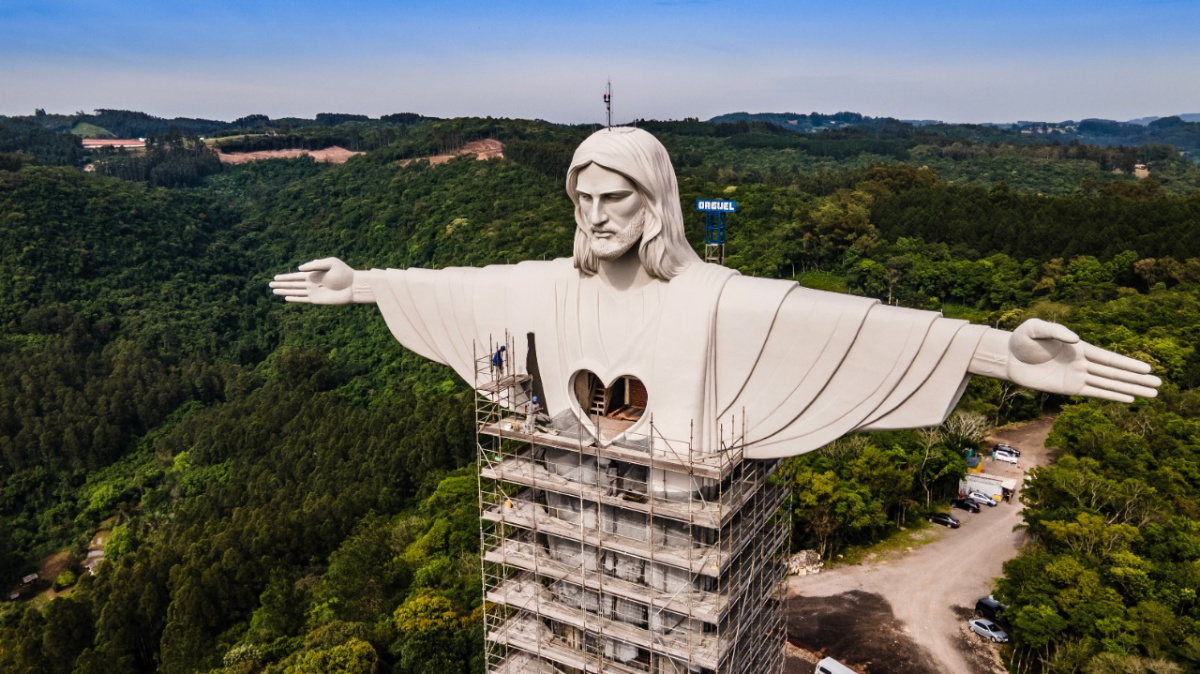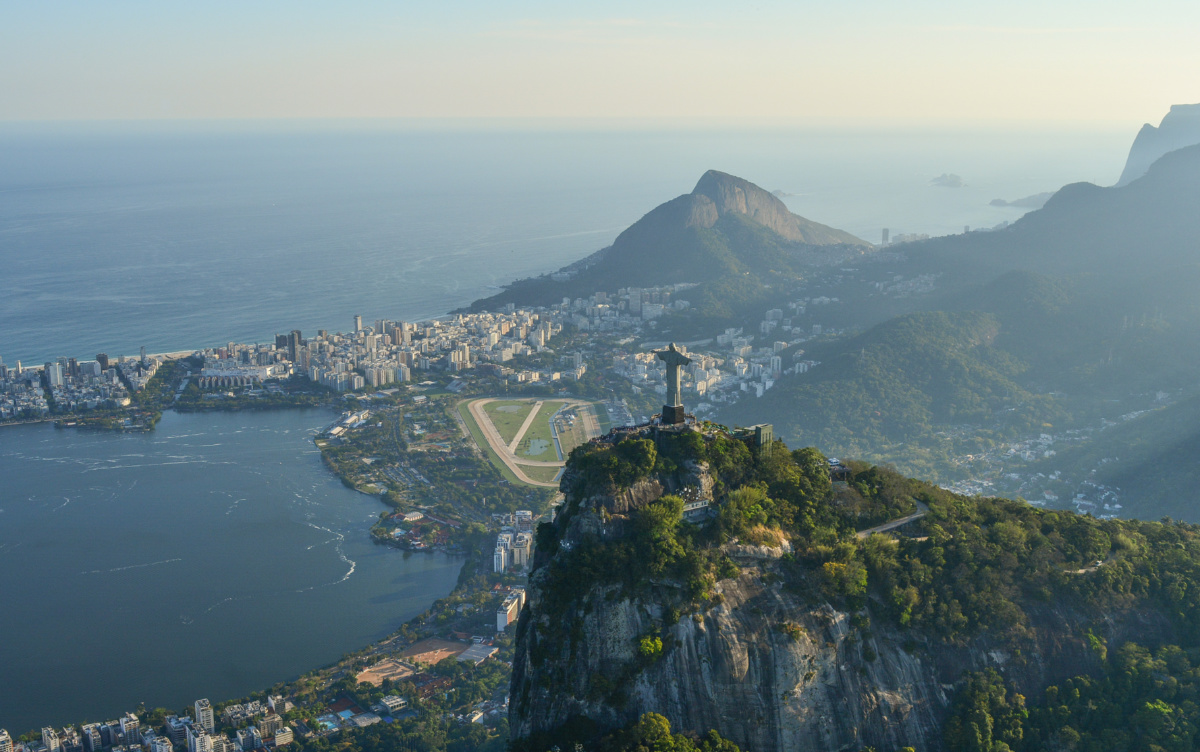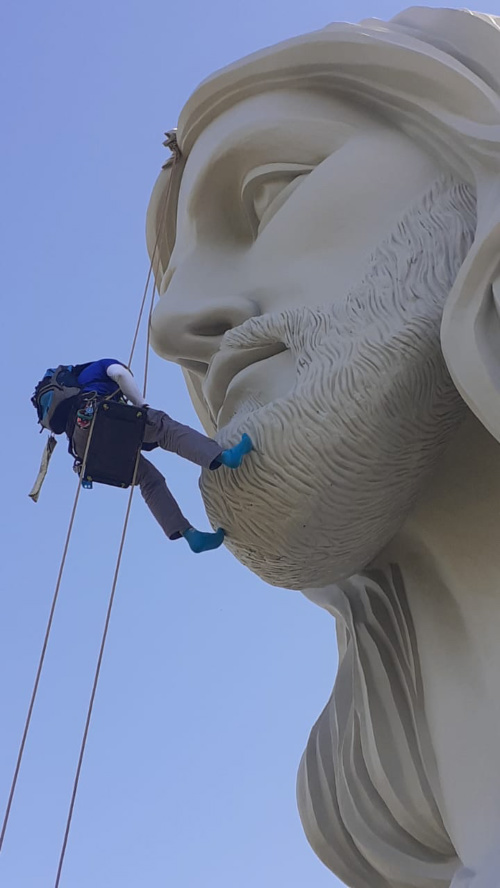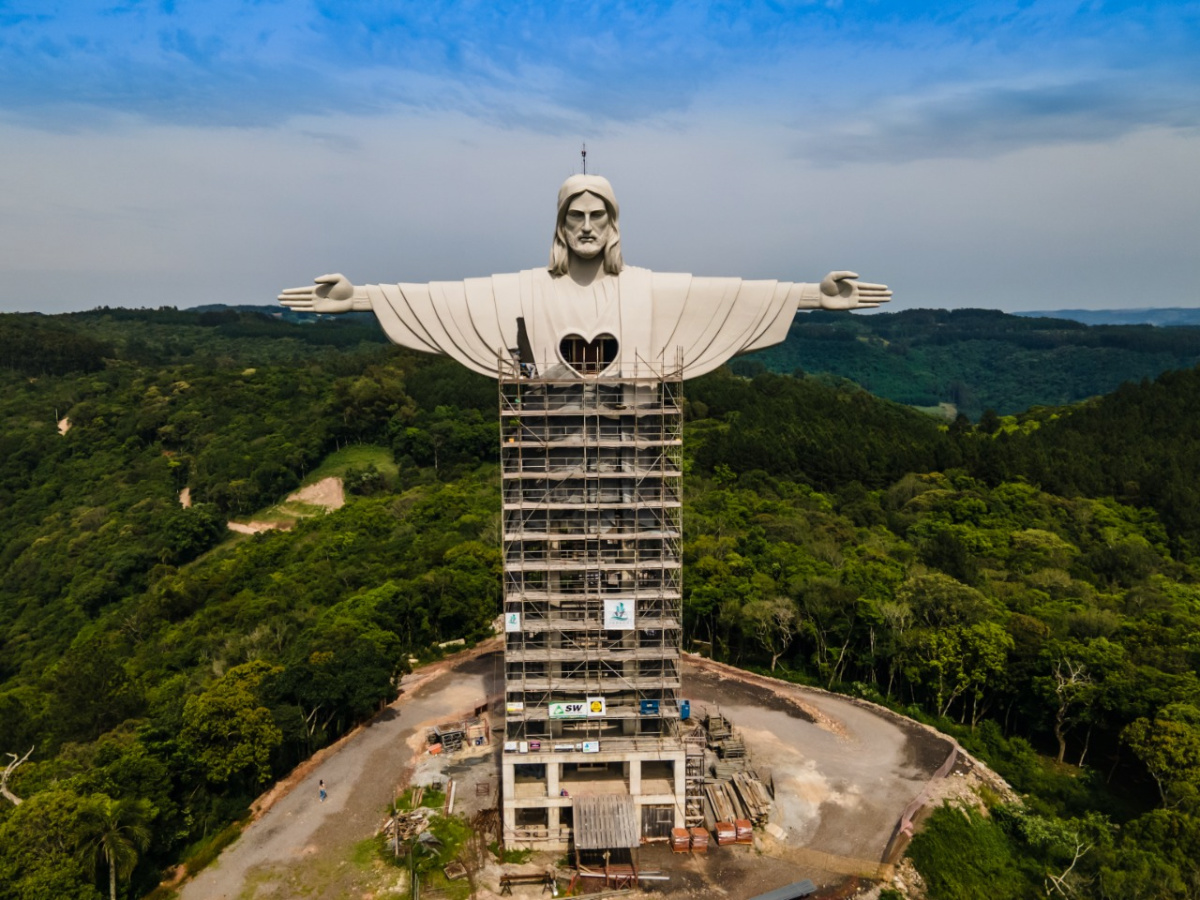
Christ the Redeemer, the monumental statue depicting Jesus Christ above the coastal city of Rio de Janeiro celebrated its 90th anniversary last month. But, as EDUARDO CAMPOS LIMA reports, it’s soon to be joined by a number of other giant statues of figures across the country…
Standing high above the Brazilian coastal city of Rio de Janeiro, the statue of Christ the Redeemer turned 90-years-old last month. The 38-metre-tall art déco statue, initially conceived in 1922 and inaugurated in October, 1931, has long been a symbol of the nation’s Catholic culture.
But with growing numbers of evangelicals also now seeing the statue as a symbol of their faith – the proportion of evangelicals in Brazil is now 31 per cent of the population compared with the 50 per cent who are Catholic – and other cities eyeing the potential for such giant statues to bring in tourist dollars, recent years have seen a growing number of new projects surrounding the construction of giant statues depicting Christ, Mary and Catholic saints right across the country.

Rio de Janeiro’s famous Christ the Redeemer. PICTURE: Raphael Nogueira/Unsplash.
One of the initiatives which has garnered the most attention has been that involving the construction of a ‘Christ the Protector’ sculpture in the city of Encantado, in the south of Brazil. The origins of the statue’s construction go back to the promise of a family who undertook to build the statue as prayed to God for the healing of a man. The idea was supported by a local priest and involved a few families, which ended up donating the land on top of a mount where the sculpture is being built.
The group launched an association in order to collect funds for the project, whose total cost was estimated in $US360,000. They had to get a loan from a bank and are receiving donations from all over the country. No governmental money has been invested in the sculpture.
“The cost has gone up with the inflation in Brazil, something that surprised us. But donations have been meeting the new needs.”
– Rafael Fontana, a member of the association, told Sight.
“The cost has gone up with the inflation in Brazil, something that surprised us. But donations have been meeting the new needs,” Rafael Fontana, a member of the association, told Sight.
Construction began in September, 2020. Since mid-2021, guided tours are being offered to visitors during the weekend. About 1,000 tourists are going to Encantado every week, Fontana said.
“The money they pay for tickets is being totally used in the building process. Thus, we have been able to balance income and costs and the works are advancing,” he explained.
Encantado’s Christ will be 43 metres tall when it is concluded.
“The sculpture’s heart will contain an observatory. An elevator will lift the visitors to that point. We still have to install the observatory’s glasses,” Fontana described.
The monument may be concluded in January, 2022. But the association does not know when the inauguration will happen, because all the surrounding areas still have to be adapted to receive tourists.
“The monument’s vicinities have to be pavemented. All the infrastructure required in a tourist attraction – such as restrooms – has yet to be built,” he said. Such elements will cost two times more than the statue itself, and they will probably be funded by the city government.
The association hopes that Encantado and nearby cities will receive investments from hotel chain and restaurant entrepreneurs. New shops may be opened, and even the local church is changing its dynamics in order to welcome the tourists.

The Christ the Protector statue under construction in Encantado. PICTURE: Konce Agência/Leonardo Capitanio
Fontana said that there are plans for the building of two other monuments in cities in the region. One is a statue of Saint Clare and the other is a sculpture of Our Lady of Lourdes.
“People from different states have been looking for us with the intention of understanding our organisational model. Their goal is to launch a similar initiative in their cities and improve religious tourism,” Fontana said.
Markus Moura, the sculptor who is building Christ the Protector, said that there are at least five projects of new Christ’s monuments in the north-east region of Brazil.
“There are also plans to build a 70-metre-tall Our Lady of Grace, a 70-metre-tall Christ, and a 20-metre-tall Saint Anthony in the south and in the south-east parts of the nation,” Moura told Sight.
Markus Moura’s father Genesio was the creator of a building technique of giant statues with reinforced concrete. Along with an uncle and two cousins, he is one of the few artists in Brazil capable of constructing sculptures taller than 20 meters. That is why he continually receives invitations to work on new monuments.
“In general, such initiatives begin with a city mayor. But at least 70 percent of them need to find an investor or group of investors in order to go on with the project,” he said.

The Christ the Protector statue being cleaned in Encantato. PICTURE: Markus Moura
Moura affirmed that he and his family have always been involved in numerous projects, but he feels that the number of new ones has been growing lately.
“I think people began to be more faithful with the pandemic. And people are looking for a calm place to relax and to thank God. That is why this kind of monument is a good alternative for a city,” he argued.
He said that the goal of all proponents of this kind of initiative is to “increase religious tourism in their cities”.
Moura was born into an Adventist family, but he believes the monuments he builds are symbols of goodness.
Evangelical Pastor Raul Ferreira Júnior told Sight that evangelical Christians would usually not support the building of such statues and wouldn’t visit them.
“We do not have a spiritual connection with statues,” said Ferreira, an advisor of the Christian bloc in the Brazilian Congress. But he said that view of the statues is changing.
“The Christian people has been feeling a great need of self-affirmation, due to a fierce battle between progressives and conservatives going on in Brazil,” he said, adding that many evangelicals now tend to identify with a monument in honour of Christ – and are ready to protest in favour of it if needed.
“Although we normally refuse statues, in these circumstances people think something like: ‘Well, at least it is a symbol of Jesus’,” he said.
The idea of a “spiritual battle” between Christians and atheists has been growing in Brazil since the presidential campaign in 2018 which ended with the victory of arch-conservative President Jair Bolsonaro.
Most evangelicals supported Bolsonaro in the election and he maintains a strong base of constituents among them. For many in that social group, these new Christs are a signal of their victory.

The Christ the Protector statue in Encantado. PICTURE: Konce Agência/Leonardo Capitanio.
Lutheran Pastor Odair Braun told Sight that projects involving the construction of holy monuments in Brazil do seem to have a political component.
“Those initiatives are the fruit of a complex combination of religious, economic, and cultural elements, besides local politics,” he told Sight.
Braun said people seem to look at Rio’s Christ the Redeemer and think that a building a monumental statue would have the same impact in their cities.
“If a project like that ends up creating jobs and improving the local economy, its proponent will obviously gain notoriety,” he affirmed.
Such social dynamics is possible in an increasingly evangelical Brazil because “popular religiousness” is still strong in the South American nation, Braun said.
Developed during centuries of a peculiar form of Catholicism – in which many rural communities rarely saw a priest and had to create their own forms of piety, Brazilian popular religiousness is largely based on the devotion of saints and their sculptures. Many analysts believe that those traits somehow survive even among evangelical Christians.
“Thus people frequently receive with joy those propositions, which are presented to them in combination with the idea that the statue will increase tourism, commerce, employment, and income,” he said.
Braun warned of the growing mixture of religious and economic motivations when it comes to such projects.
“That mixture is usually unhealthy,” he concluded.





